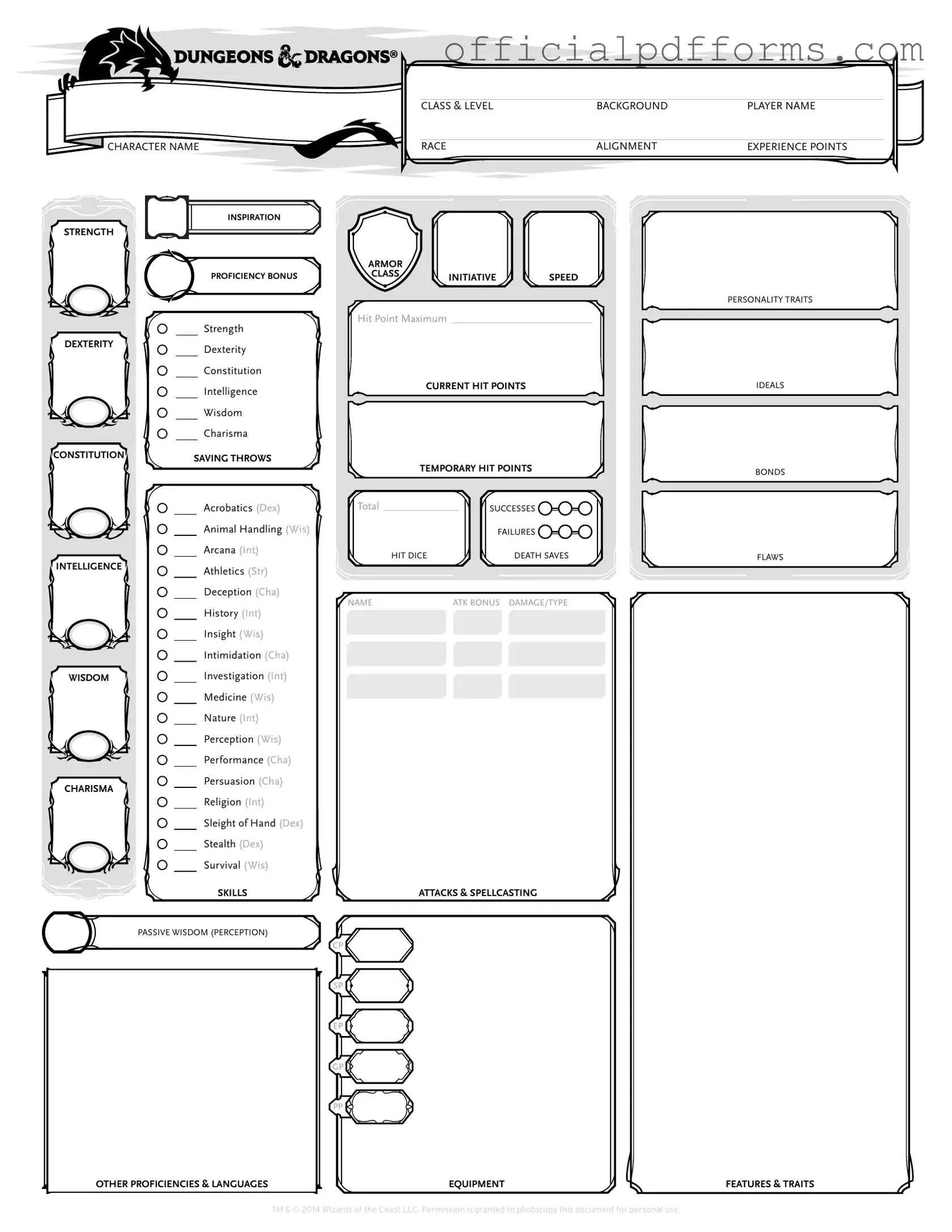What is a DnD Character Sheet?
A DnD Character Sheet is a tool used by players to record and organize all the important details about their character in Dungeons & Dragons. It includes information such as abilities, skills, equipment, and background. This sheet helps players keep track of their character's progress and actions during the game.
How do I fill out a DnD Character Sheet?
To fill out a DnD Character Sheet, follow these steps:
-
Choose a character class and race.
-
Assign ability scores based on your character's strengths and weaknesses.
-
Record your character's skills, proficiencies, and equipment.
-
Include details about your character's background and personality traits.
-
Keep track of hit points and other relevant statistics.
Make sure to consult the Player's Handbook for guidance on specific classes and races.
Can I use a digital version of the DnD Character Sheet?
Yes, many players prefer using digital versions of the DnD Character Sheet. Various websites and apps allow you to create and manage your character online. Digital sheets often include features like automatic calculations for stats and easy updates during gameplay.
What are ability scores, and why are they important?
Ability scores represent a character's basic attributes, including Strength, Dexterity, Constitution, Intelligence, Wisdom, and Charisma. These scores affect a character's performance in various tasks and combat situations. High scores can provide bonuses to rolls, making your character more effective in the game.
What is the difference between skills and proficiencies?
Skills are specific areas where a character can excel, such as Stealth or Persuasion. Proficiencies indicate that a character has training in certain skills or tools, giving them an advantage. For example, if a character is proficient in Acrobatics, they can add their proficiency bonus to their rolls for that skill.
How do I track hit points on the Character Sheet?
Hit points (HP) represent your character's health. On the Character Sheet, there will be a designated section to record current and maximum hit points. As your character takes damage or heals, update these numbers accordingly. Keeping accurate track of HP is crucial for survival during encounters.
What is a background, and how does it affect gameplay?
A character's background provides context for their story and motivations. It can influence skills, proficiencies, and starting equipment. For example, a character with a noble background might have skills related to persuasion and etiquette. Backgrounds can also offer role-playing opportunities during the game.
Can I customize my DnD Character Sheet?
Absolutely! Many players choose to customize their Character Sheets to better fit their needs. You can add additional notes, modify layouts, or even create your own sections. Just ensure that all essential information is still easily accessible for gameplay.
Where can I find a DnD Character Sheet?
You can find DnD Character Sheets in several places:
-
Official Dungeons & Dragons website
-
Player's Handbook
-
Various tabletop gaming stores
-
Online platforms and apps designed for DnD
Choose the format that works best for you, whether it’s a printed sheet or a digital version.
